Description
Technical Specifications:
| Model: | SRX300 | SRX320 | SRX340 | SRX345 |
|---|---|---|---|---|
| Connectivity | ||||
| Total onboard ports | 8x1GbE | 8x1GbE | 16x1GbE | 16x1GbE |
| Onboard RJ-45 ports | 6x1GbE | 6x1GbE | 8x1GbE | 8x1GbE |
| Onboard small form-factor pluggable (SFP) transceiver ports | 2x1GbE | 2x1GbE | 8x1GbE | 8x1GbE |
| MACsec-capable ports | 2x1GbE | 2x1GbE | 16x1GbE | 16x1GbE |
| Out-of-Band (OOB) management ports | 0 | 0 | 1x1GbE | 1x1GbE |
| Mini PIM (WAN) slots | 0 | 2 | 4 | 4 |
| Console (RJ-45 + miniUSB) | 1 | 1 | 1 | 1 |
| USB 3.0 ports (type A) | 1 | 1 | 1 | 1 |
| Optional PoE+ ports | N/A | 61 | 0 | 0 |
| Memory and Storage | ||||
| System memory (RAM) | 4 GB | 4 GB | 4 GB | 4 GB |
| Storage (flash) | 8 GB | 8 GB | 8 GB | 8 GB |
| SSD slots | 0 | 0 | 1 | 1 |
| Dimensions and Power | SRX300 | SRX320 | SRX340 | SRX345 |
| Form factor | Desktop | Desktop | 1U | 1U |
| Size (WxHxD) | 12.63 x 1.37 x 7.52 in. (32.08 x 3.47 x 19.10 cm) |
11.81 x 1.73 x 7.52 in. (29.99 x 4.39 x 19.10 cm) |
17.36 x 1.72 x 14.57 in. (44.09 x 4.36 x 37.01 cm) |
17.36 x 1.72 x 14.57 in. (44.09 x 4.36 x 37.01 cm) / 17.36 x 1.72 x 18.7 in. (44.09 x 4.36 x 47.5 cm)2 |
| Weight (device and PSU) | 4.38 lb (1.98 kg) | 3.28 lb (1.51 kg)3 / 3.4 lb (1.55 kb)4 |
10.80 lb (4.90 kg) | 10.80 lb (4.90 kg) |
| Redundant PSU | No | No | No | Yes |
| Power supply | AC (external) | AC (external) | AC (external) | AC (external) |
| Maximum PoE power | N/A | 180 W4 | N/A | N/A |
| Average power consumption | 15.4 W | 27 W3 / 112 W4 | 122 W | 122 W |
| Average heat dissipation | 85 BTU/h | 157 BTU/h3 / 755 BTU/h4 | 420 BTU/h | 420 BTU/h |
| Maximum current consumption | 0.254 A | 0.473 A3 / 2.07 A4 | 1.364 A | 1.364 A |
| Acoustic noise level | 0dB (fanless) | 37 dBA3 / 40 dBA4 | 45.5 dBA | 45.5 dBA |
| Airflow/cooling | Fanless | Front to back | Front to back | Front to back |
| Environmental, Compliance, and Safety Certification | SRX300 | SRX320 | SRX340 | SRX345 |
| Operating temperature | 32° to 104° F (0° to 40° C) | |||
| Nonoperating temperature | 4° to 158° F (-20° to 70° C) | |||
| Operating humidity | 10% to 90% noncondensing | |||
| Nonoperating humidity | 5% to 95% noncondensing | |||
| Meantime between failures (MTBF) | 44.5 years | 32.5 years3 / 26 years4 | 27 years | 27.4 years |
| FCC classification | Class A | Class A | Class A | Class A |
| RoHS compliance | RoHS 2 | RoHS 2 | RoHS 2 | RoHS 2 |
| Common Criteria certification | NDPP, VPNEP, FWEP, IPSEP (based on Junos 15.1X49-D60) | |||
| Performance and Scale | SRX300 | SRX320 | SRX340 | SRX345 |
| Routing with packet mode (64 B packet size) in Kpps5 | 300 | 300 | 550 | 750 |
| Routing with packet mode (IMIX packet size) in Mbps5 | 800 | 800 | 1,600 | 2,300 |
| Routing with packet mode (1,518 B packet size in Mbps5 | 1,500 | 1,500 | 3,000 | 5,500 |
| Stateful firewall (64 B packet size) in Kpps5 | 200 | 200 | 350 | 550 |
| Stateful firewall (IMIX packet size) in Mbps5 | 500 | 500 | 1,100 | 1,700 |
| Stateful firewall (1,518 B packet size) in Mbps5 | 1,000 | 1,000 | 3,000 | 5,000 |
| IPsec VPN (IMIX packet size) in Mbps5 | 100 | 100 | 200 | 300 |
| IPsec VPN (1,400 B packet size) in Mbps5 | 300 | 300 | 600 | 800 |
| Application visibility and control in Mbps6 | 500 | 500 | 1,000 | 1,700 |
| Recommended IPS in Mbps6 | 200 | 200 | 400 | 600 |
| Next-generation firewall in Mbps6 | 100 | 100 | 200 | 300 |
| Route table size (RIB/FIB) (IPv4 or IPv6) | 256,000/256,000 | 256,000/256,000 | 1 million/600,0007 | 1 million/600,0007 |
| Maximum concurrent sessions (IPv4 or IPv6) | 64,000 | 64,000 | 256,000 | 375,000 |
| Maximum security policies | 1,000 | 1,000 | 2,000 | 4,000 |
| Connections per second | 5,000 | 5,000 | 10,000 | 15,000 |
| NAT rules | 1,000 | 1,000 | 2,000 | 2,000 |
| MAC table size | 15,000 | 15,000 | 15,000 | 15,000 |
| IPsec VPN tunnels | 256 | 256 | 1,024 | 2,048 |
| Number of remote access uses | 25 | 50 | 150 | 250 |
| GRE tunnels | 256 | 256 | 512 | 1,024 |
| Maximum number of security zones | 16 | 16 | 64 | 64 |
| Maximum number of virtual routers | 32 | 32 | 64 | 128 |
| Maximum number of VLANs | 1,000 | 1,000 | 2,000 | 3,000 |
| AppID sessions | 16,000 | 16,000 | 64,000 | 64,000 |
| IPS sessions | 16,000 | 16,000 | 64,000 | 64,000 |
| URLF sessions | 16,000 | 16,000 | 64,000 | 64,000 |
| WAN Interface | SRX300 | SRX320 | SRX340 | SRX345 |
| 1 port T1/E1 MPIM (SRX-MP-1T1E1-R) | No | Yes | Yes | Yes |
| 1 port VDSL2 Annex A/M MPIM (SRX-MP-1VDSL2-R) | No | Yes | Yes | Yes |
| 1 port serial MPIM (SRX-MP-1SERIAL-R) | No | Yes | Yes | Yes |
| 4G / LTE MPIM (SRX-MP-LTE-AA & SRX-MP-LTE-AE) | No | Yes | Yes | Yes |
Additional Specification Features:
Routing Protocols
- IPv4, IPv6, ISO, Connectionless Network Service (CLNS)
- Static routes
- RIP v1/v2
- OSPF/OSPF v3
- BGP with Route Reflector
- IS-IS
- Multicast: Internet Group Management Protocol (IGMP) v1/v2, Protocol Independent Multicast (PIM) sparse mode (SM)/dense mode (DM)/source-specific multicast (SSM), Session Description Protocol (SDP), Distance Vector Multicast Routing Protocol (DVMRP), Multicast Source Discovery Protocol (MSDP), Reverse Path Forwarding (RPF)
- Encapsulation: VLAN, Point-to-Point Protocol (PPP), Frame Relay, High-Level Data Link Control (HDLC), serial, Multilink Point-to-Point Protocol (MLPPP), Multilink Frame Relay (MLFR), and Point-to-Point Protocol over Ethernet (PPPoE)
- Virtual routers
- Policy-based routing, source-based routing
- Equal-cost multipath (ECMP)
QoS Features
- Support for 802.1p, DiffServ code point (DSCP), EXP
- Classification based on VLAN, data-link connection identifier (DLCI), interface, bundles, or multifield filters
- Marking, policing, and shaping
- Classification and scheduling
- Weighted random early detection (WRED)
- Guaranteed and maximum bandwidth
- Ingress traffic policing
- Virtual channels
- Hierarchical shaping and policing
Switching Features
- ASIC-based Layer 2 Forwarding
- MAC address learning
- VLAN addressing and integrated routing and bridging (IRB) support
- Link aggregation and LACP
- LLDP and LLDP-MED
- STP, RSTP, MSTP
- MVRP
- 802.1X authentication
Firewall Services
- Stateful and stateless firewall
- Zone-based firewall
- Screens and distributed denial of service (DDoS) protection
- Protection from protocol and traffic anomaly
- Integration with Pulse Unified Access Control (UAC)
- Integration with Aruba Clear Pass Policy Manager
- User role-based firewall
- SSL Inspection (Forward-proxy)
Network Address Translation (NAT)
- Source NAT with Port Address Translation (PAT)
- Bidirectional 1:1 static NAT
- Destination NAT with PAT
- Persistent NAT
- IPv6 address translation
VPN Features
- Tunnels: Generic routing encapsulation (GRE)3, IP-IP3, IPsec
- Site-site IPsec VPN, auto VPN, group VPN
- IPsec crypto algorithms: Data Encryption Standard (DES), triple DES (3DES), Advanced Encryption Standard (AES-256), AES-GCM
- IPsec authentication algorithms: MD5, SHA-1, SHA-128, SHA-256
- Pre-shared key and public key infrastructure (PKI) (X.509)
- Perfect forward secrecy, anti-reply
- IPv4 and IPv6 IPsec VPN
- Multi-proxy ID for site-site VPN
- Internet Key Exchange (IKEv1, IKEv2), NAT-T
- Virtual router and quality-of-service (QoS) aware
- Standard-based dead peer detection (DPD) support
- VPN monitoring
Network Services
- Dynamic Host Configuration Protocol (DHCP) client/server/ relay
- Domain Name System (DNS) proxy, dynamic DNS (DDNS)
- Juniper real-time performance monitoring (RPM) and IPmonitoring
- Juniper flow monitoring (J-Flow)10
High Availability Features
- Virtual Router Redundancy Protocol (VRRP)10
- Stateful high availability
- Dual box clustering
- Active/passive
- Active/active
- Configuration synchronization
- Firewall session synchronization
- Device/link detection
- In-Band Cluster Upgrade (ICU)
- Dial on-demand backup interfaces
- IP monitoring with route and interface failover
Management, Automation, Logging, and Reporting
- SSH, Telnet, SNMP
- Smart image download
- Juniper CLI and Web UI
- Junos Space and Security Director
- Python
- Junos OS event, commit, and OP script
- Application and bandwidth usage reporting
- Auto installation
- Debug and troubleshooting tools
- Zero-Touch Provisioning with Contrail Service Orchestration
Advanced Routing Services
- Packet mode
- MPLS (RSVP, LDP)
- Circuit cross-connect (CCC), translational cross-connect (TCC)
- L2/L3 MPLS VPN, pseudowires
- Virtual private LAN service (VPLS), next-generation multicast VPN (NG-MVPN)
- MPLS traffic engineering and MPLS fast reroute
Application Security Services9
- Application visibility and control
- Application-based firewall
- Application QoS
- Application-based advanced policy-based routing
Threat Defense and Intelligence Services10
- Intrusion prevention
- Antivirus
- Antispam
- Category/reputation-based URL filtering
- Spotlight Secure threat intelligence
- Protection from botnets (command and control)
- Adaptive enforcement based on GeoIP
- Sky Advanced Threat Prevention to detect and block zeroday attacks11
1 PoE ports on SRX320 available as a separate SKU: SRX320-POE.
2 SRX345 with dual AC PSU model.
3 SRX320 non PoE model.
4 SRX320-POE with 6 ports PoE+ model.
5 Throughput numbers based on UDP packets and RFC2544 test methodology.
6 Throughput numbers based on HTTP traffic with 44 KB transaction size.
7 Route scaling numbers are with enhanced route-scale features turned on.
8 GRE, IP-IP, J-Flow monitoring, and VRRP are not supported in stateful high-availbility mode.
9 Available as part of Junos Software Enhanced (JSE) software package or advanced security subscription licenses.
10 Offered as advanced security services subscription licenses.
11 Sky ATP is supported on SRX340 and higher platforms.

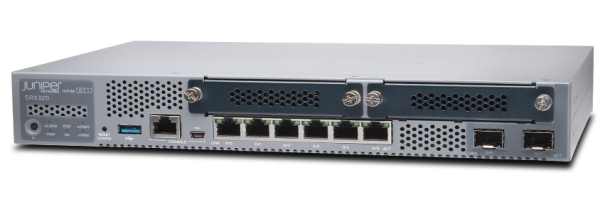
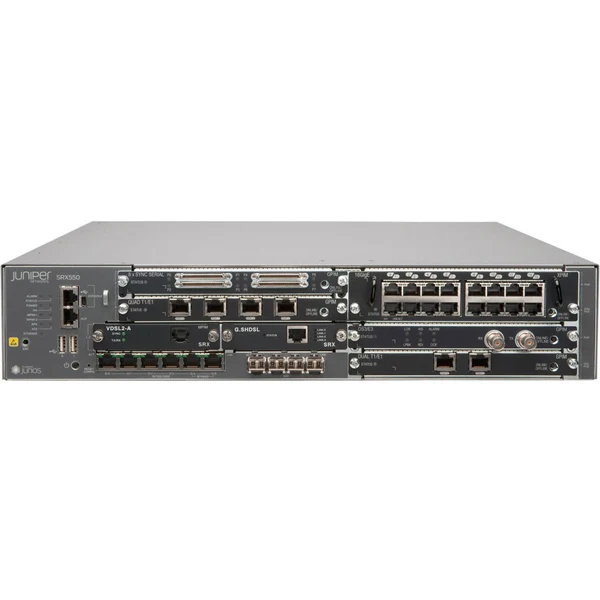
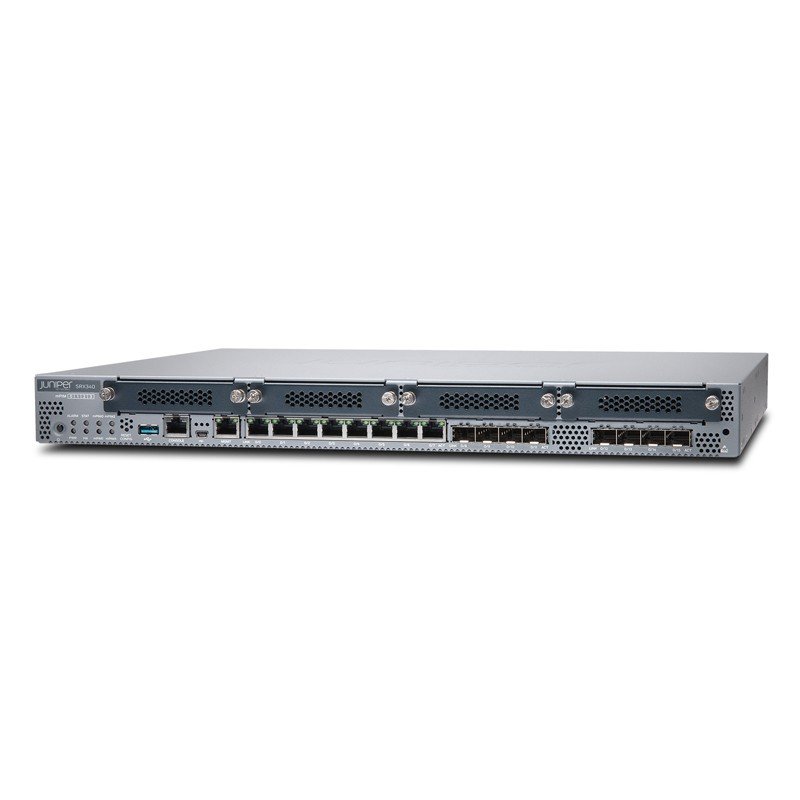
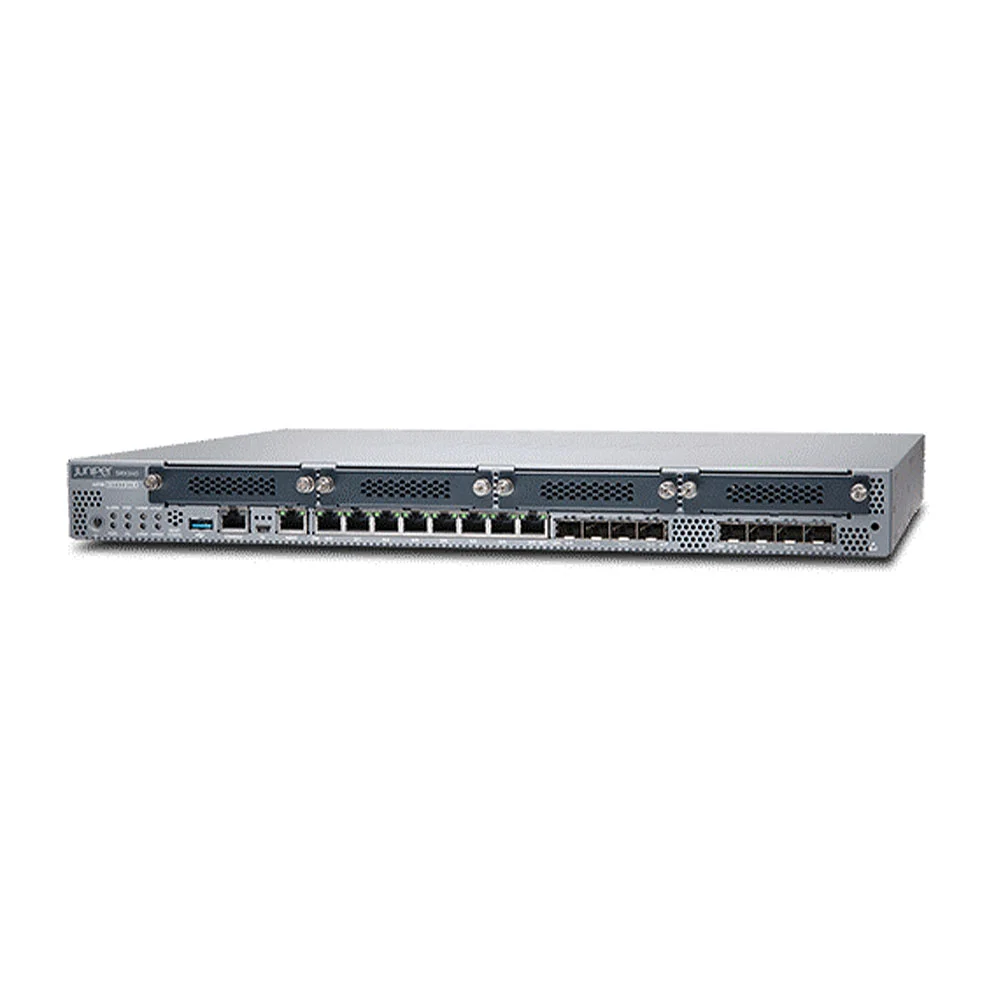
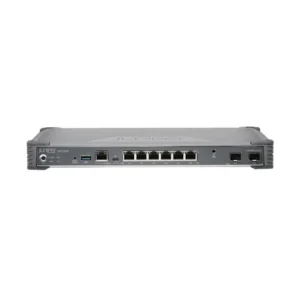
Reviews
There are no reviews yet.